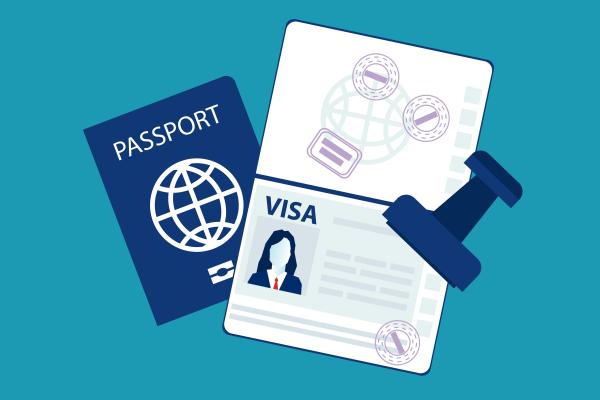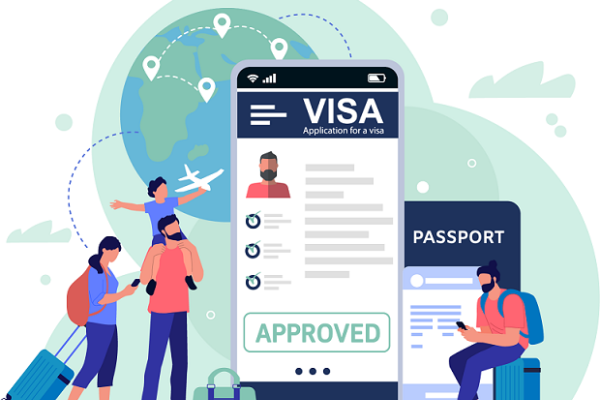What is EU visa policy?
Under this key policy, all 27 countries in the Schengen area apply the same visa rules.
Non-EU nationals need a visa to enter the Schengen area for a visit of up to 90 days in any 180-day period.
When someone enters a country in the Schengen area, the 180-day period starts. They can enter Schengen area countries as many times as they want, but only stay for a total of 90 days, every 180 days.
A Schengen visa is generally valid for every country in the Schengen area.
Visas for stays exceeding 90 days are subject to national procedures.
EU visa policy is monitored and implemented by the European Commission.
For a list of these countries, see Annex I of Regulation (EU) 2018/1806.
Individual Schengen countries can grant visa-free access to certain categories of people - for example diplomatic staff, armed forces, refugees and school pupils on an excursion.
Nationals of certain countries must have a visa - called an airport transit visa - even to simply transit through the international (non-Schengen) part of an EU airport.
Schengen countries can also impose individual airport transit requirements on certain other countries.
For a list of these countries, see Annex II of the Regulation (EU) 2018/1806.
27 of these countries have visa waiver agreements with the EU.
The decision of whether to grant visa-free status to a non-EU country is based on a variety of criteria (migration, security, considerations of human rights, reciprocity, and economic benefit - in particular in terms of tourism and foreign trade).
New travel document from 2025
From 2025, visa-exempt travellers will need to fill out an online ETIAS form and pay a small fee before being able to travel to the Schengen Area.
This form is designed to facilitate border control and security.
It is not a visa, but is comparable to similar systems in the USA (ESTA), Canada (eTA), and Australia (eVisitor).
The EU visa code sets out the procedures and conditions for issuing short-stay visas.
Operational instructions for applying the code are set out in:
The visa code also helps improve cooperation with non-EU countries on readmissions of irregular migrants, through the 'visa leverage mechanism'. Under this mechanism, if a country does not cooperate sufficiently on readmissions, restrictive measures can be imposed as regards processing visas and visa fees.
Such measures have been adopted for nationals of The Gambia:
The EU has visa facilitation agreements in place with certain non-EU countries. Under the simplified visa regime, non-EU citizens enjoy facilitated procedures (such as lower visa fees) to obtain a visa for the Schengen area.
However, visa facilitation agreements can be suspended if a countryno longer satisfies the conditions of the agreement. What then applies are the general rules of the EU visa code.
Suspensions can be triggered by an EU country or by the European Commission. Currently, 2 agreements are suspended, those with:
- Russia (full suspension of facilitation agreement)
- Belarus (partial suspension of facilitation agreement).
Visa facilitation agreements are linked to readmission agreements. Readmission agreements establish procedures for returning irregular migrants to the EU or non-EU country they came from (EU, non-EU nationals or stateless persons).
EU countries may also individually negotiate agreements on local bordertraffic with neighbouring non-EU countries. These agreements enable border residents of specific areas to cross the EU's external borders, under certain conditions, without having to obtain a visa.
The visa suspension mechanism (Regulation No 1806/2018, article 7) enables Schengen countries to call for a temporary suspension of a visa exemption in the event of a sudden and substantial surge in irregular migration.
If this happens, a country can notify the Commission, which can then decide to trigger the suspension mechanism.
Currently the visa waiver agreement with Vanuatu has been suspended under the suspension mechanism.
Since 2017, the Commission has been issuing annual reports on its usage of the mechanism.
This is when nationals of Schengen area countries do not need a visa to visit countries whose nationals also do not need a visa to visit the Schengen area.
The EU aims at achieving full visa reciprocity with non-EU countries whose nationals are exempt from the visa requirement. For that purpose, a visa reciprocity mechanism is set out in Regulation No 1806/2018 (article 7).
To date, the EU has achieved visa reciprocity with all visa-free third countries, except the United States.
Citizens of Bulgaria, Cyprus, and Romania still need a visa to visit the United States.
The Pact on Migration and Asylum set the objective of making the visa procedure fully digitalised by 2025.
This involves:
- replacing the visa sticker with the option to apply through a European online visa platform
- simplifying the visa application process
- reducing the costs for governments and applicants.
The requirements are set out in Regulation 2023/2685 and Regulation 2023/2667.
After a transition period of 7 years, Schengen countries will all have to use the EU's standard online platform for visa applications:
- applicants will carry out all steps in the process on the platform, except for providing biometrics (when required)
- a digital visa will replace the visa sticker.







